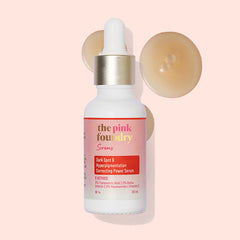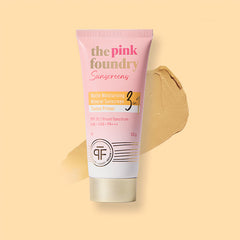Hormonal Acne: Causes and Symptoms of hormonal acne
Are pus-filled or raised pustules on the face giving you all the trouble? Acne problems are not just about how it looks on the face, but also about the pain and discomfort. And did you know that you are more prone to get acne due to hormonal fluctuations? Read on to know all about hormonal acne!
What is hormonal acne?
Hormonal acne or adult acne is a skin condition that can affect adults between the ages of twenty and fifty. As the term suggests, it is a type of acne that is caused by hormonal fluctuations. It is characterized by bumps on the back, chest, shoulders, and face as pimples, cysts, whiteheads, and blackheads. Excess sebum secretion in the oil glands leads to hormonal acne.
Though this form of acne can affect both women and men, it is more commonly seen in women during pregnancy and menopause. At the time of puberty, hormonal acne tends to appear in the T-zone – the chin, nose, and forehead. However, in most cases, it appears on the lower half of the face, i.e., around the jawline and the bottom of the cheeks.
Here are a few instances that can cause an influx of hormones leading to hormonal acne:
- polycystic ovarian syndrome
- menstruation
- menopause
- raised androgen levels
When hormone fluctuates due to any of these reasons or more, acne maybe aggravated because of:
- increased oil production from the pores
- greater skin inflammation
- acne-causing bacterial (Propionibacterium acnes) production
- blocked skin cells due to hair follicles
Now that you know what is hormonal acne, let’s take a look at its causes and symptoms.
Also Read: How to Treat Hormonal Acne and Get Rid of It
What causes hormonal acne?
Clogged pores are the chief causes of hormonal acne. It develops when the amount of oil production in the skin increases due to hormonal changes. This overdrive of oil production starts interacting with the bacteria present on the skin pores where the hair follicles are found. Acne is the result of this interaction.
Causes of hormonal acne from clogged pores are:
- Bacteria
- Dead skin cells
- Excess sebum (oil secreted from sebaceous glands in middle layers of your skin)
What causes hormonal acne that is controllable?
- Lack of sleep
- Stress
- Use of products that are free of any ingredient that can clog the pores (also called non-acnegenic or non-comedogenic)
What causes uncontrollable hormonal acne?
- Side-effects of taking medications containing steroids
- Men who have undergone testosterone treatment
- Existing medical conditions related to metabolic and ovarian conditions (for instance, polycystic ovary syndrome)
- Family history of hormonal acne
- Changes in hormone levels in women, such as during menopause, periods, pregnancy, or due to discontinuance of birth control
The following factors can turn hormonal acne become worse than ever:
- High humidity
- Pollution
- Stress
- Poor diet (full of sugars and refined carbs)
- Picking at or squeezing the pimples
Pregnancy induced hormonal acne
Extreme hormonal fluctuations during pregnancy is one of the causes of acne during this time. Typically, acne shows up in the first trimester and improves when the pregnancy progresses. It might come back briefly in the third trimester. However, you have nothing to worry because this type of acne usually clears up as the hormone levels stabilize after the baby is born.
Common hormonal acne symptoms
The most common hormonal acne symptoms are damaged skin tissues (lesions) that become red, inflamed, sore, and painful. Though these lesions commonly show up on the cheeks, you might even notice them in the given places:
- Neck
- Face
- Back
- Chest
- Shoulders
Additionally, hormonal acne symptoms show up in the form of following lesions:
- Blackheads
- Whiteheads
- Pustules (pus-filled skin bumps that are less than 5 mm in diameter)
- Papules (raised skin bumps that are less than 5 mm in diameter)
- Cysts (pockets below the skin containing fluid)
Different types of hormonal acne treatment
Depending on how severe your acne is, various hormonal acne treatment options are found that can help to lower sebum production, redness, painful swelling, and pimple formation:
- Whiteheads and blackheads: Topical creams
- Inflammatory acne: Acne spot treatments and topical creams
- Moderate acne: Acne spot treatments and antibiotics
- Cystic acne: Steroid injections
Other forms of treatment for hormonal acne are:
- Dietary changes: Include more fruits and green veggies and avoid oily, junk food
- Birth control: Taking oral contraceptives
- Daily cleansing: Use gentle, oil-free, and soap-free skin cleansers
- Light or laser therapy: It is typically combined with another form of acne treatment to deliver the best results.
The Best Way to Remove Acne
Redness, swelling, and pain from mild to moderate acne is a serious cause of concern. The good news is that now you can visibly reduce the appearance of acne overnight from the first application. You can try some good products to remove acne. The Pink Foundry is one of the major brands that offers such cosmetic products for acne removal.
Such products are loaded with active acne-fighting ingredients like sulfur, zinc oxide, glycerin, calamine, and salicylic acid. And while you are at it, don’t forget to clean your face regularly with a Cleanser. Moreover, be assured that all our products are not just effective but also Paraben & PABA Free, Dermatologically Tested, Non-Comedogenic, Hypoallergenic, and Vegan & Cruelty-Free like that of the Pink Foundry.
However, we strongly advise to always take your doctor's approval and guidance before using any skin care products.
Final note
If hormonal acne has been giving you trouble, don’t worry or lose sleep over it. There are several treatment options that can help you get back that clear skin you want. However, do visit and consult your doctor before trying any new skin care product, as they are best suited to guide and recommend products based on your needs and skin.










